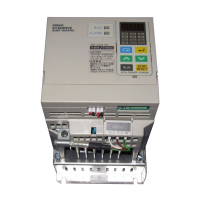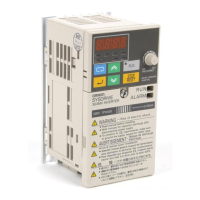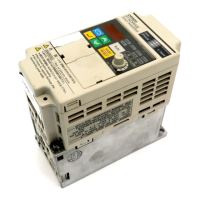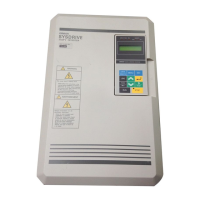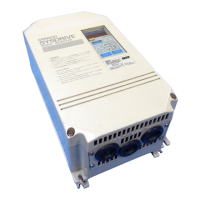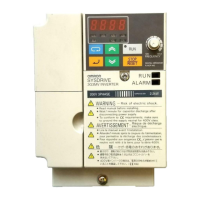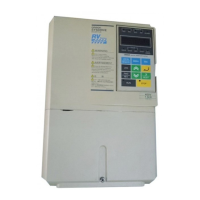5-12
5-2-5 Vertical-axis Load Drops when Brakes are
Applied
•The sequence is incorrect.
The Inverter goes into DC braking status for 0.5 seconds after deceleration is com-
pleted. (This is the factory-set default.) To make sure that the brake holds, use the fre-
quency detection function and apply the brake only when the detected frequency
drops to 3 to 5 Hz or lower. Also at startup, use the frequency detection function, and
release the brake only when the detected frequency is 3 to 5 Hz or higher.
•The DC braking is insufficient.
If the DC braking power is insufficient, adjust parameter n46 (DC injection braking cur-
rent).
•An inappropriate brake is being used.
The holding brake is designed only for holding, not for braking. If the holding brake is
used for braking, the brake pad will wear out much faster than designed. Use an ap-
propriate brake for braking.
5-2-6 Motor Burns
•The dielectric strength of the motor is insufficient.
Surge arises when the motor (inductive load) is connected to the output side of the
Inverter. Normally, the maximum surge voltage is approximately three times the power
voltage. Therefore, the dielectric strength of the motor to be used must be higher than
the maximum surge voltage.
It is recommended that motors specifically for Inverters be used, especially for the
400-VAC-class Inverters.
5-2-7 Controller Receives Noise when Inverter is
Started
•Noise derives from Inverter switching.
Take the following actions to prevent noise:
S Reduce the carrier frequency of the Inverter.
The number of internal switching times is reduced, so noise can be reduced to
some extent.
S Improve the frame ground.
A current generated by internal switching normally leaks into the frame ground.
Therefore, connect the ground terminal with a sufficiently thick and short wire of
100 Ω or less.
Operation Chapter 5
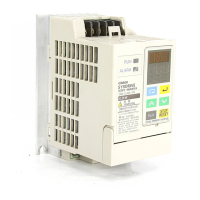
